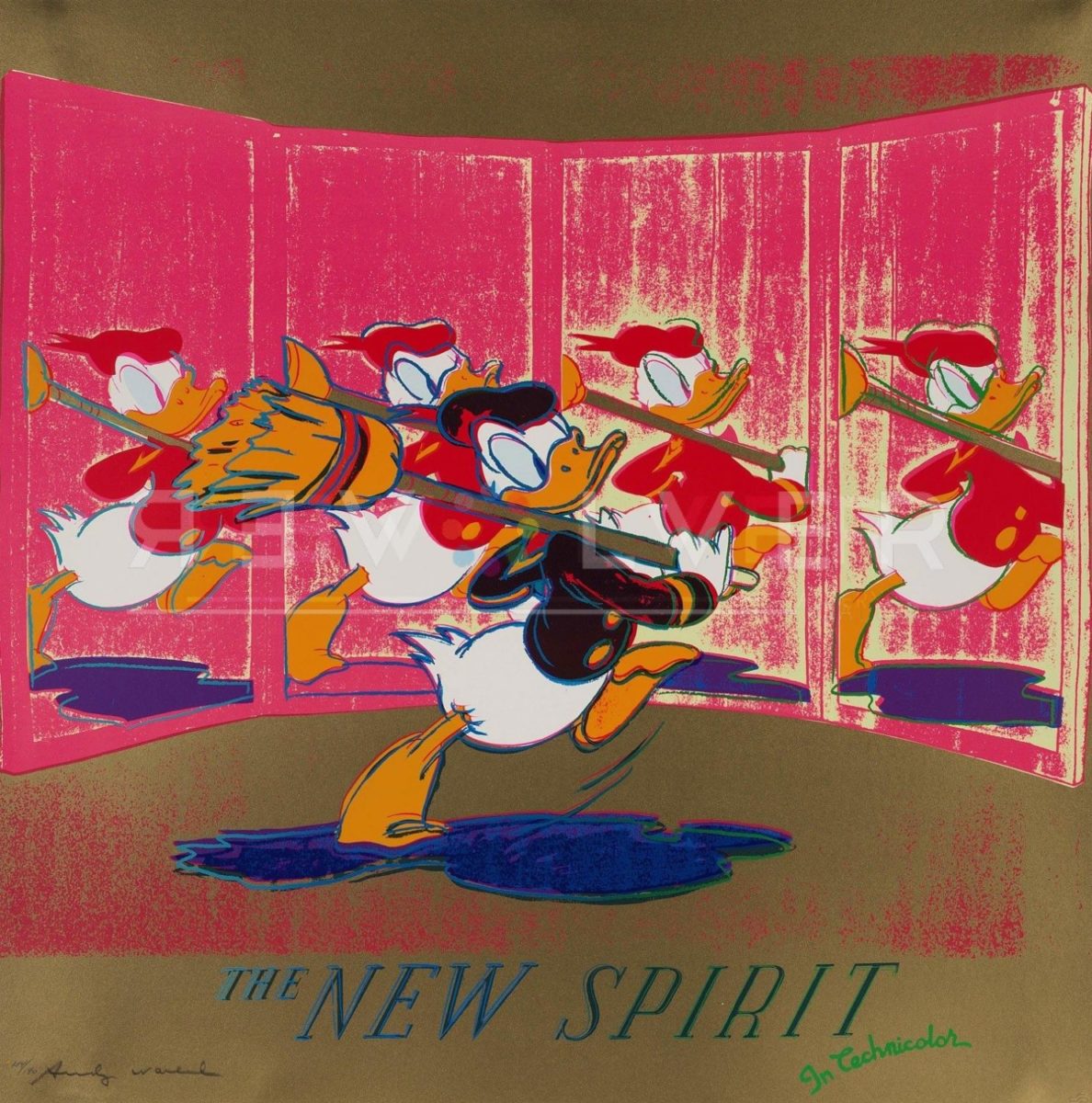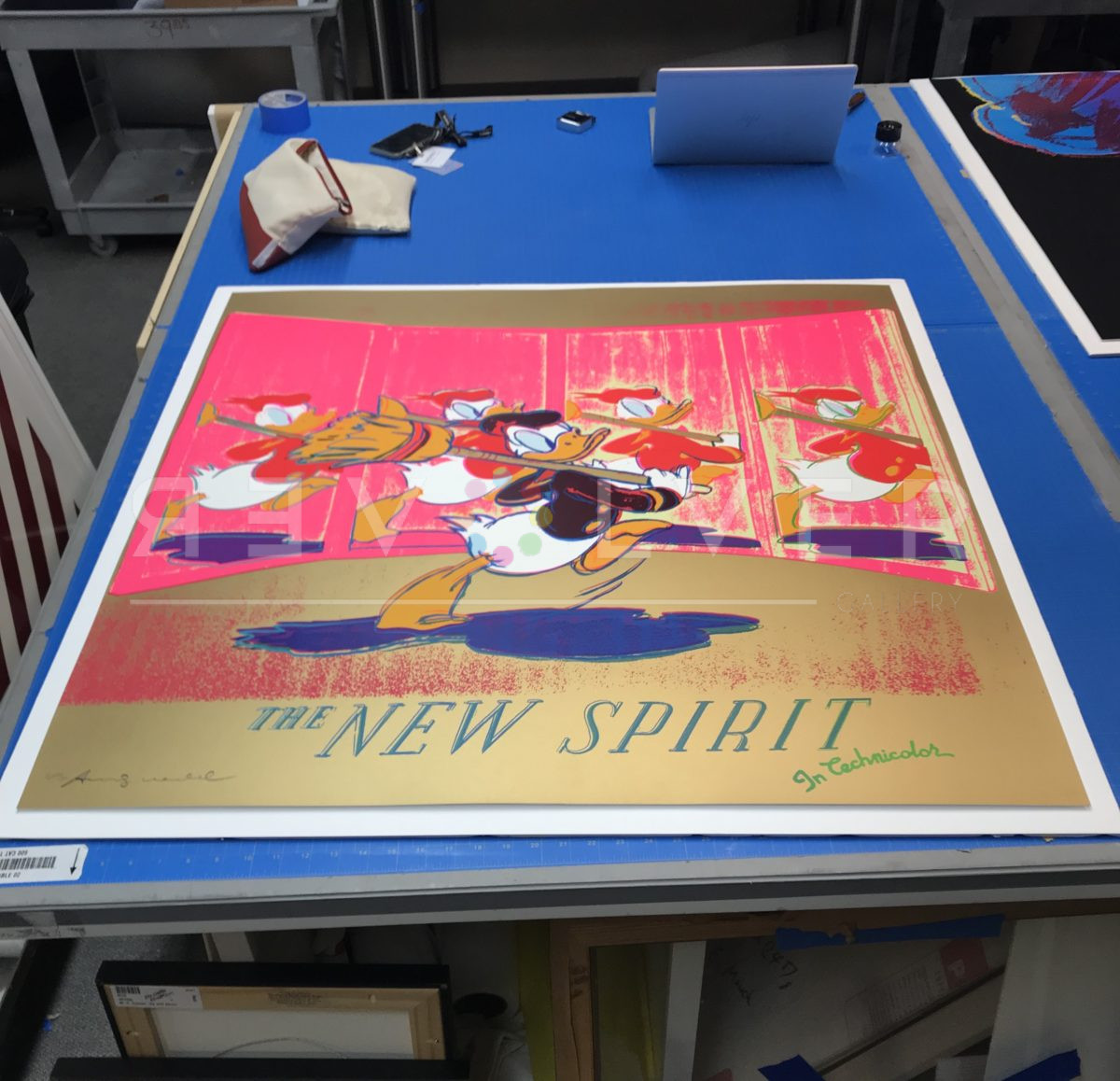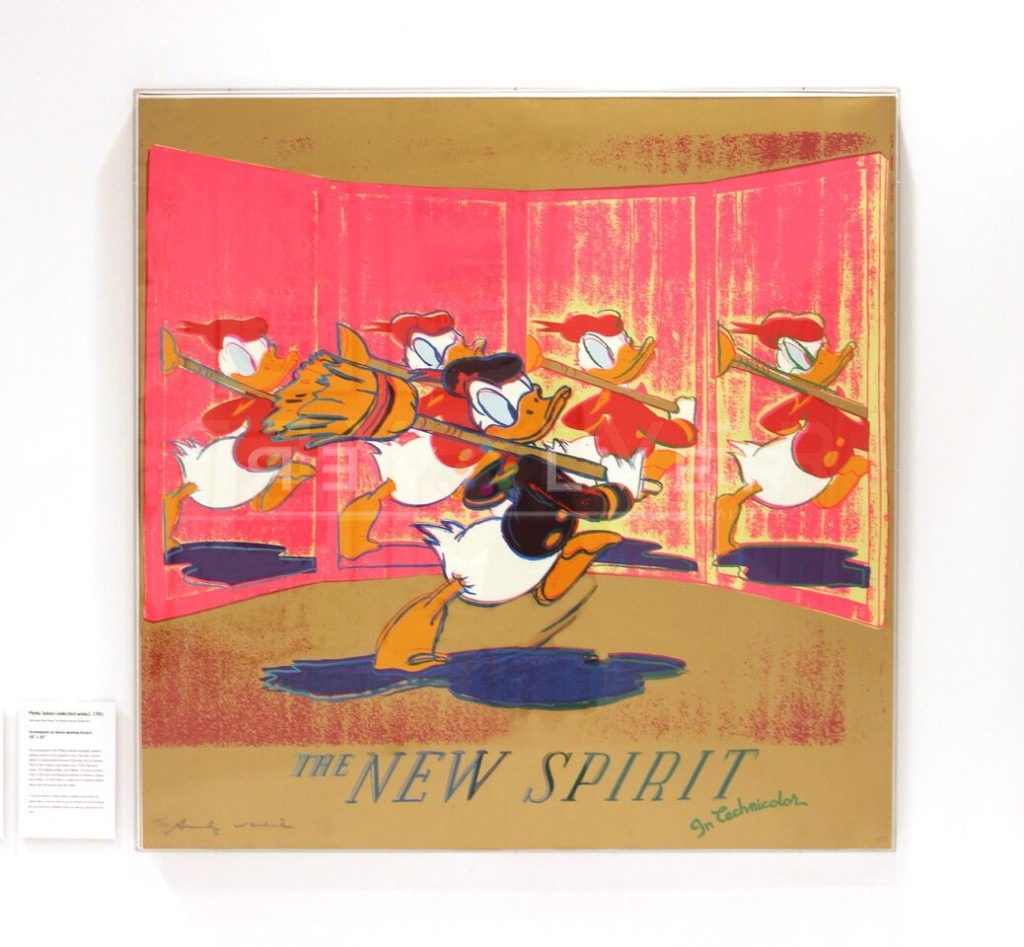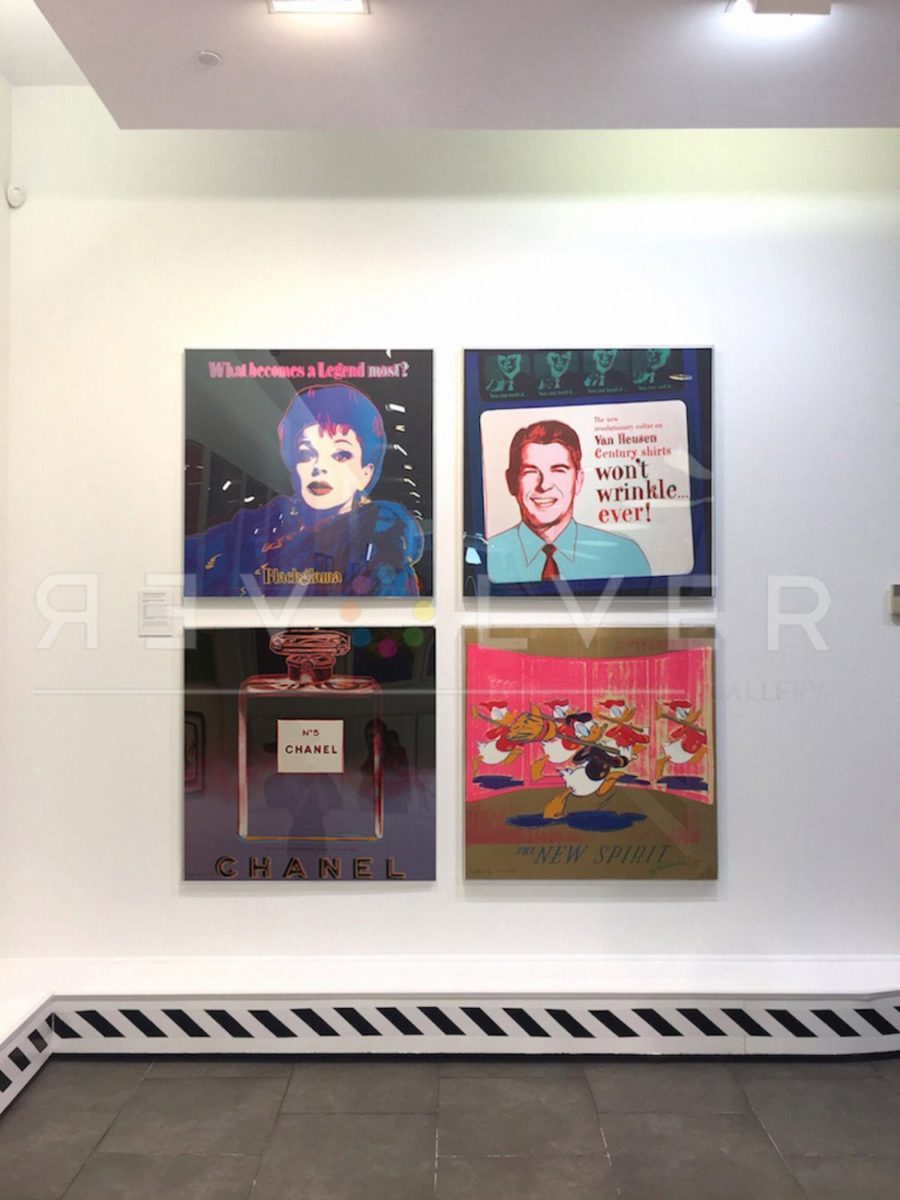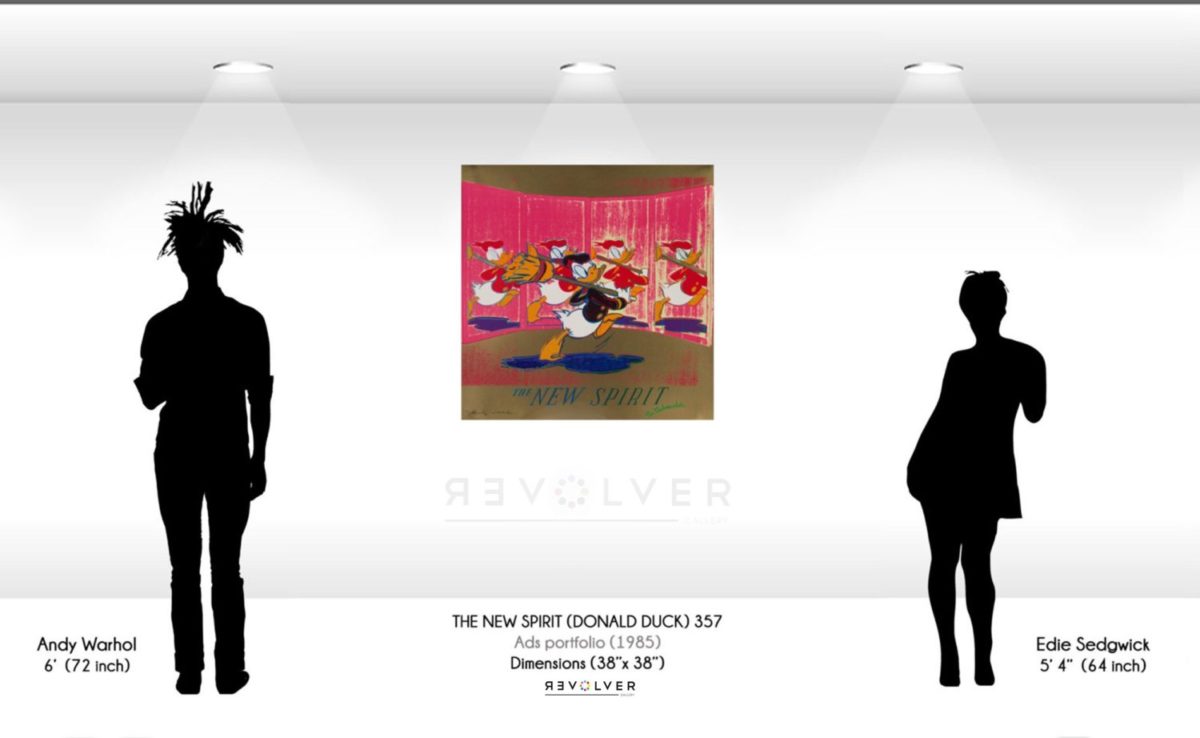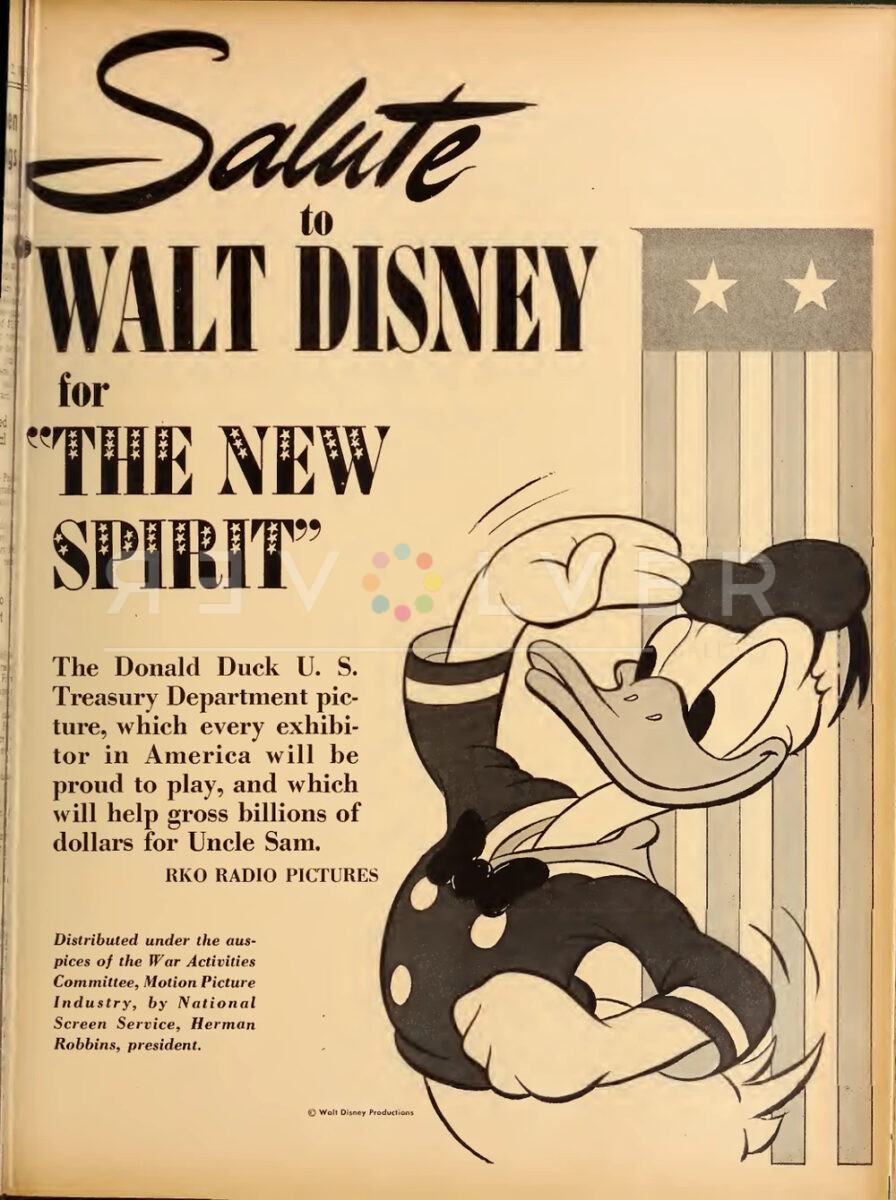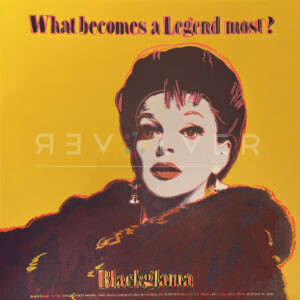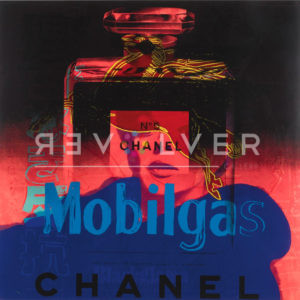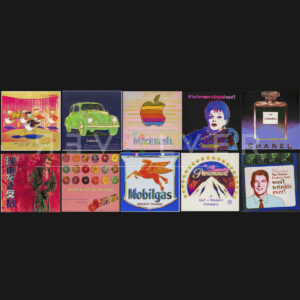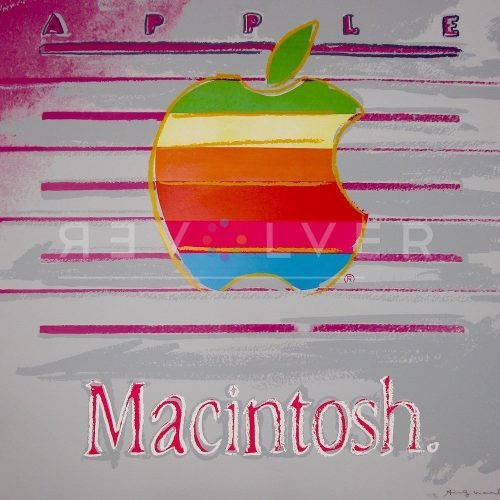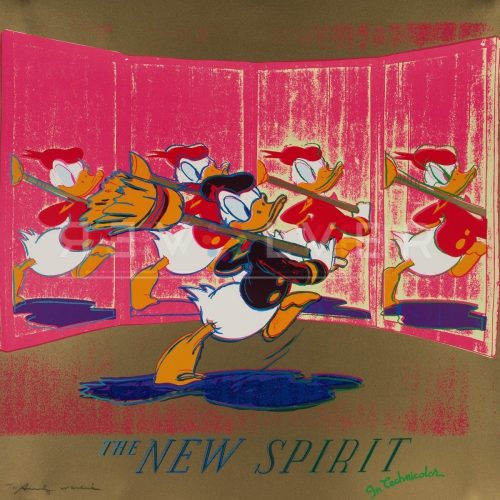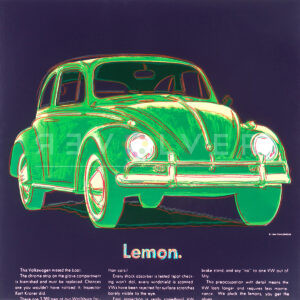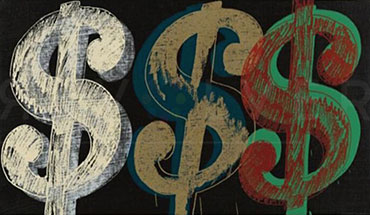The New Spirit (Donald Duck) by Andy Warhol is a screenprint from the artist’s Ads portfolio, published in 1985. The artwork depicts the Disney character Donald Duck, taken from a still of Walt Disney’s short film titled “The New Spirit,” a World War II propaganda short film encouraging Americans to support the military by paying their taxes.
The Ads portfolio was commissioned by Ronald Feldman of Feldman Fine Arts, who worked with Warhol on many publications during the 1980s. The series is undoubtedly one of Warhol’s most celebrated creations from the last decade of his life.
No one likes taxes, but everyone loves Disney. Especially Warhol, who hailed Walt Disney as his “own favorite personal hero.” Inspired by a Disney cartoon starring America’s favorite duck, the pop-artist’s The New Spirit (Donald Duck) 357 has all the spirit that a wartime propaganda cartoon can have. The New Spirit, nominated for an Academy Award for Best Documentary Feature in 1943, depicts Donald Duck as a middle class American citizen with an enthusiasm for supporting the World War II effort with the prompt and cheerful paying of his taxes.
In the Ads portfolio, Warhol’s art acts as a “mirror” to reflect the influence of mass media and on modern society. The New Spirit artwork highlights this influence as a marketing tactic used by the government. The composition centers the beloved anthropomorphic duck and four reflections of him in a multi-framed mirror as seen in the cartoon. Seemingly as a nod to Fantasia, another Disney cartoon released three years prior to The New Spirit, Donald carries a broomstick over his back. The screenprint’s vintage style is made vibrant and youthful with bright, contrasting hues and lines softened by shading that resembles that of a crayon. With Disney’s illustrations being so idolized by the 1980s, Warhol’s re-imagination of Donald Duck only bolstered his magnificence.
In his Ads series, Warhol shamelessly plays to the public’s penchant for media consumption, refashioning famous advertisements into fine art with a cheeky commentary and a raise awareness of the capitalist economy. In using pre-popularized images, Warhol not only gives them even more publicity, but also practices every marketing agency’s favorite selling strategy: repackaging the same product in a shinier box. The portfolio also includes Chanel, Life Savers, Mobil, Volkswagen, Apple, Blackglama (Judy Garland), Rebel Without a Cause (James Dean), Paramount, and Van Heusen (Ronald Reagan).
Photo credit: Promo for “The New Spirit” short in Technicolor made by Walt Disney in 1942.

